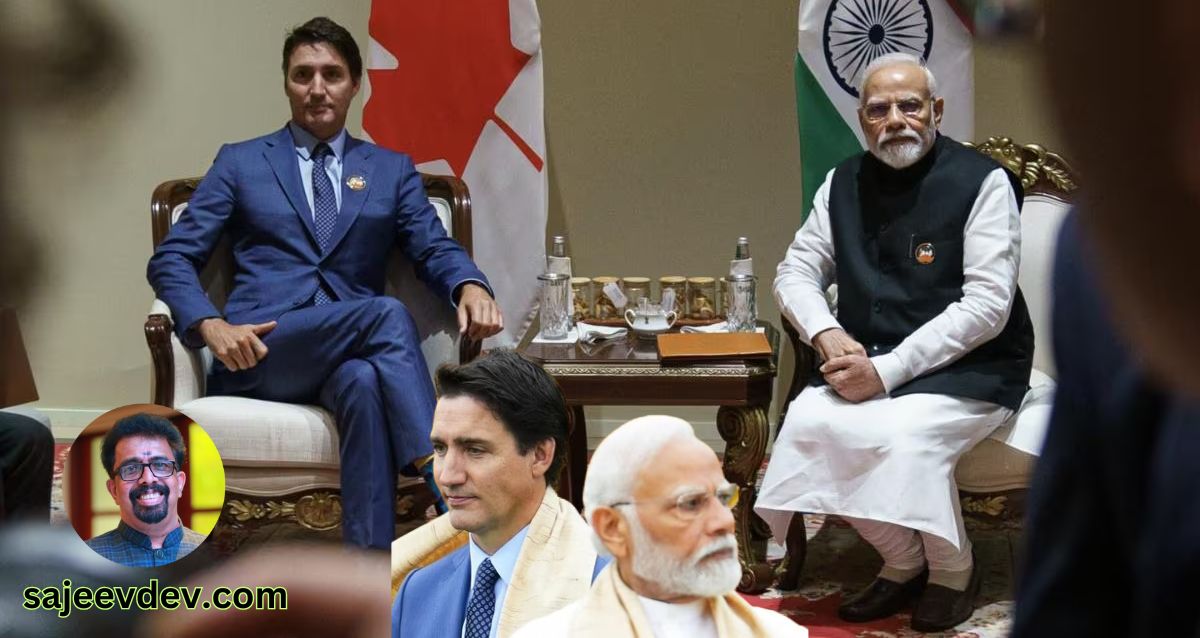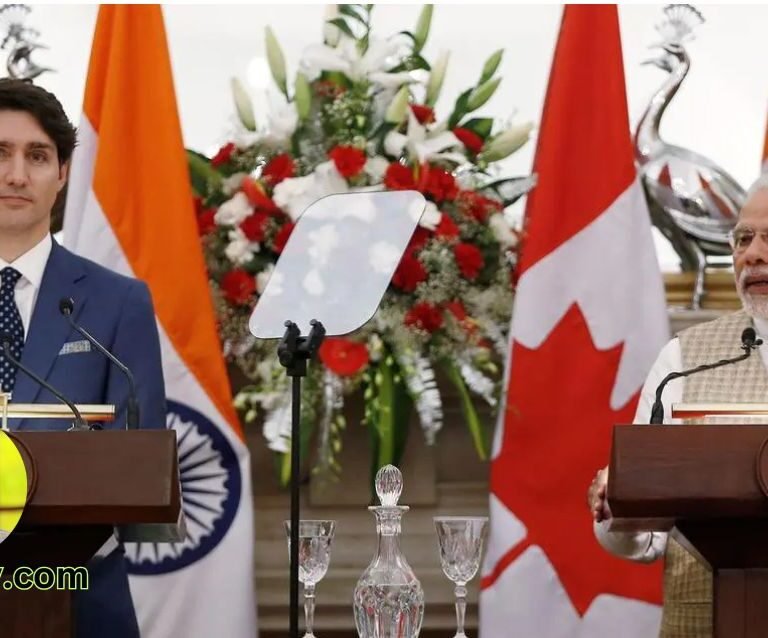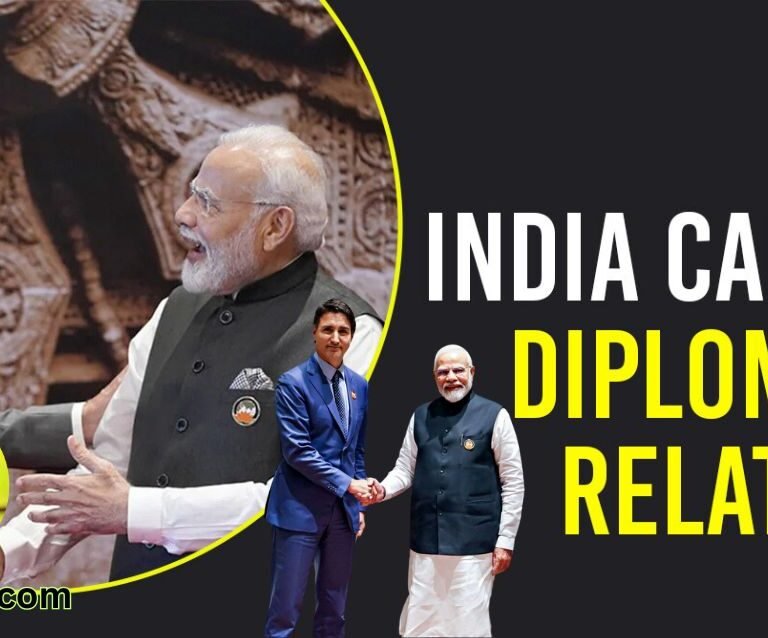The Canada-India Relationship
The relationship between Canada and India has evolved significantly over the years, characterized by cultural, economic, and political ties that reflect a shared history and mutual interests. Historically rooted in the legacy of the British Empire, the connection between the two nations has flourished, particularly since the 1960s when large-scale immigration from India brought significant Indian Diaspora to Canada. This community has played a crucial role in fostering the bilateral relationship, enriching Canadian society with its diverse cultural contributions.
Economically, both Canada and India have established robust ties, particularly in trade and investment. Canada is one of the leading suppliers of agricultural products and natural resources to India, while India is a growing market for Canadian technology and services. Over the years, various agreements have been signed to enhance trade cooperation, reflecting a mutual desire to strengthen economic ties. The Comprehensive Economic Partnership Agreement (CEPA) is one such initiative, aimed at further facilitating trade and investment flows between the two nations.
Politically, both countries share common values such as democracy, pluralism, and human rights, which serve as a foundation for their diplomatic relations. Canada has actively supported India’s aspirations on various international platforms, including promoting India’s role in global forums. Additionally, both countries engage in regular dialogues on various issues ranging from climate change to security concerns, emphasizing their commitment to a collaborative approach in addressing global challenges.
The contemporary landscape of the Canada-India relationship, however, is complex, influenced by various factors, including the sentiments surrounding the Khalistan movement. This movement has raised questions and led to tensions that affect interactions between the two countries. Understanding this multifaceted relationship is essential in grasping the implications and challenges brought forth by ongoing developments.
Understanding the Khalistan Movement
The Khalistan Movement originated in the late 1940s in response to the socio-political upheaval within India, particularly concerning the Sikh community. This movement advocates for the establishment of Khalistan, a sovereign state for Sikhs in the Punjab region of India. The roots of this demand can be traced to events such as the partition of India in 1947, which resulted in significant communal violence and migration, displacing numerous Sikhs. Over the years, various political and religious leaders, including Bhindranwale, emerged as prominent figures advocating for Khalistan, shaping the aspirations and fears of the Sikh community.
The movement gained momentum in the 1980s, coinciding with an increase in grievances against the Indian state perceived to be marginalizing Sikhs. This period was marked by heightened tensions, culminating in the operation known as “Blue Star” in 1984, which targeted the Golden Temple in Amritsar, a sacred site for Sikhs. The fallout from this operation further fueled sentiments for an independent Sikh state, as many viewed it as an affront to their identity and rights. The response from the community was multifaceted, with some Sikhs rallying for an independent state and others emphasizing the need for greater autonomy and rights within India.
The Khalistan movement has had significant ramifications both within India and among the global Sikh diaspora. Outside India, many Sikhs have organized and mobilized for the cause, holding protests and forming advocacy groups that push for international recognition of their demands. This dynamic has contributed to a complex landscape, resulting in strained relations between Canada and India, particularly as Canadian Sikhs assert their support for a movement seen as threatening by the Indian government. It is essential, therefore, to recognize the Khalistan Movement not only as a political aspiration but also as a deeply rooted emotional response to historical injustices experienced by Sikhs.
Sikh Separatism in Canada
The Sikh separatist movement in Canada has garnered considerable attention in recent years, particularly concerning its connection to the Khalistan movement, which advocates for an independent Sikh state in India. Canada is home to one of the largest Sikh populations outside India, and as such, it has become a focal point for various political activities related to Sikh identity and rights. Groups pushing for Khalistan have organized a variety of events, including protests, rallies, and lobbying efforts aimed at raising awareness and support for their cause.
These Sikh separatist organizations often operate within a framework of political activism that highlights perceived injustices faced by Sikhs in India. They utilize social media and grassroots campaigning to mobilize support from both the Sikh community and the general Canadian public. The narrative constructed by these groups frames the Khalistan issue within the context of human rights, seeking to gain sympathy and support from a wider audience that values democratic principles and self-determination.
The impact of these activities on public opinion in Canada is multifaceted. While some Canadians, especially within the Sikh community, express solidarity with the Khalistan cause, others are concerned about potential extremism associated with the movement. This dual sentiment can create a complex dynamic, often leading to divisions within the broader Sikh community regarding their stance on separatism.
Moreover, mainstream political parties in Canada are often cautious about engaging with the Khalistan issue, recognizing the sensitivity surrounding it. This reticence can lead to a perception of neglect among activists, furthering their resolve. As the Khalistan movement continues to unfold, it remains crucial to note how it shapes the perspectives within the Canadian Sikh diaspora and influences the broader Canada-India relationship.
The Impact on Canada-India Relations
The Khalistan movement, advocating for an independent Sikh homeland in India, significantly influences the diplomatic relations between Canada and India. Over the years, the activities of Sikh separatist groups within Canada have drawn considerable attention from the Indian government and the broader Indian community. These activities are perceived as a direct challenge to India’s territorial integrity, leading to heightened tensions between the two nations.
Several incidents have exacerbated this strain in relations. Notably, the 2020 protest in Toronto, where supporters of the Khalistan movement gathered, saw displays of flags and slogans that many in the Indian government interpreted as hostile. Such events have prompted diplomatic outrage and calls for the Canadian government to intervene, further complicating bilateral discussions. India has repeatedly urged Canada to take action against pro-Khalistan organizations deemed as promoting extremism, emphasizing the need for a unified approach against separatist movements.
In response, the Canadian government has often emphasized its commitment to freedom of expression while seeking to balance this with the underlying concerns raised by India regarding security and terrorism. This dichotomy has put pressure on collaboration in various sectors, including trade and security. For instance, potential trade agreements are scrutinized through the lens of these tensions, and discussions on security cooperation have been impacted by the perceived leniency towards Sikh separatist activities in Canada.
The cultural exchange between the two nations also suffers as a result of these strained relations. Initiatives that promote a mutual understanding and appreciation of each other’s traditions have been overshadowed by political disagreements and a lack of trust. Such strains not only impact government relations but extend to the social fabric of communities within Canada and India, ultimately affecting how citizens perceive one another.
Concerns Raised by the Indian Government
The Indian government has expressed growing concerns regarding Sikh separatist activities in Canada, specifically those associated with the Khalistan movement. These activities are viewed through the prism of national security, as the Indian authorities believe they pose a significant threat not only to India’s sovereignty but also to the safety of its citizens. The Canadian landscape has become a focal point for these separatist groups, which has led to increased scrutiny from New Delhi.
In diplomatic engagements, the Indian government has formally raised these concerns, alerting Canadian officials to the potential ramifications of allowing such separatist activities to flourish. The discourse has often focused on the idea that these groups undermine India’s territorial integrity while inciting unrest among diaspora communities in Canada. The Indian authorities have noted the potential for radicalization among local Sikh populations, warning that such dynamics could lead to increased tensions within both countries.
Furthermore, the Indian government has leveraged international forums to express its discontent regarding the handling of Sikh separatism by Canada. Through resolutions and discussions, officials have urged greater cooperation from Canadian authorities in combating extremism, emphasizing the need for vigilance against elements that can ignite communal tensions. Canada’s perceived inaction or leniency is frequently highlighted in diplomatic notes, indicating that the Indian government demands a more proactive approach from its Canadian counterpart.
Ultimately, these concerns illustrate a complex and often tense dynamic between India and Canada, driven by differing perspectives on the legitimacy of separatist movements. While Canada prides itself on its multicultural fabric, India’s apprehensions underscore the challenges posed by diaspora politics and the global implications of nationalistic movements. As these dialogues continue, the relationship may increasingly be tested, requiring careful navigation from both nations.
Canadian Response to Sikh Separatists
The Canadian government’s stance regarding Sikh separatism forms a complex narrative characterized by the principles of democracy, freedom of speech, and national security. Canada prides itself on being a nation that upholds the rights of its citizens to voice their beliefs and advocate for their causes. This, however, leads to a delicate balancing act, particularly when it comes to the prominent visibility of Sikh separatist groups advocating for Khalistan, a proposed independent Sikh state. The Canadian authorities remain wary of the implications of such activism, particularly concerns surrounding extremism and its potential to exacerbate tensions with India.
The federal government has consistently reinforced its commitment to upholding civil liberties while simultaneously addressing any threats that arise from extremist ideologies. This commitment is underscored by the recognition that not all Sikh activism is rooted in extremism; many individuals within the community advocate for social justice without endorsing separatist violence. As a result, the Canadian approach aims to distinguish between legitimate political aspirations and those that may advocate for acts deemed hostile or violent. Authorities have claimed responsibility for monitoring activities linked to Sikh separatists, maintaining an open dialogue with community leaders to foster a better understanding of their concerns and aspirations.
Furthermore, the bilateral relationship with India serves as an important consideration within Canadian policy. The Canadian government has aimed to reassure India that it remains committed to combating any form of extremism which poses a threat to public safety. Regular diplomatic engagements and discussions between the two nations reflect this effort. While recognizing the rights of its Sikh citizens to express their views, Canada seeks to ensure that such expression does not undermine its broader international relationships or national security. All these factors contribute to a nuanced Canadian response to the challenges posed by Sikh separatism.
Public Opinion and Media Coverage
Public opinion in Canada regarding the Khalistan movement and Sikh separatist activities is marked by a complex interplay of historical narratives, personal experiences, and media representation. Many Canadians of Sikh descent express a dual identity, navigating both their heritage and their citizenship. Within this community, opinions on the movement can vary significantly. Some view the Khalistan movement as a legitimate expression of self-determination, while others criticize it for its potential to incite separatism and division within Canada. This divergence often reflects broader socio-political sentiments regarding national unity and cultural recognition.
Media coverage plays a crucial role in shaping these perceptions. Canadian media outlets have provided extensive reporting on the activities of Sikh separatist groups, occasionally linking them to larger geopolitical tensions with India. Such coverage can lead to misunderstandings or oversimplifications of the movement’s goals. It is essential to recognize that while some media portrayals emphasize extremist factions, others highlight peaceful advocates working for Sikh rights. This tension can create a polarized view among the Canadian public, potentially deepening divides.
Furthermore, sensational headlines and selective reporting often capture public attention, leading to skewed interpretations of events. As Canadian society increasingly grapples with issues of multiculturalism and pluralism, the portrayal of the Khalistan movement in the media can either contribute to a deeper understanding of its historical context or fuel misconceptions. The framing of such narratives directly influences how Canadians perceive their own Sikh compatriots, and this, in turn, has ramifications for Canada-India relations.
Overall, public opinion and media narratives are vital components that shape the discourse surrounding the Khalistan movement. Future engagement will require a concerted effort to foster dialogue and understanding among diverse perspectives, emphasizing peaceful coexistence and mutual respect.
Promoting Dialogue and Understanding
In order to mitigate tensions stemming from the Khalistan Movement and foster a collaborative relationship between Canada and India, it is imperative to encourage dialogue and understanding between the concerned communities. One effective strategy is the establishment of community forums that bring together Canadian and Indian citizens to discuss their perspectives on the Khalistan Movement. These forums could provide safe and constructive spaces for individuals to share their experiences, clarify misconceptions, and explore areas of common interest.
Furthermore, joint initiatives between Canadian and Indian organizations, such as cultural exchange programs, can play a significant role in building mutual respect and understanding. By participating in shared activities, such as art shows, music festivals, and sports events, individuals from both communities can celebrate their rich heritages while also appreciating one another’s cultural traditions, thereby fostering stronger interpersonal connections.
Educational programs are another vital tool in bridging the gap between the two nations. Curricula designed for schools and universities should include comprehensive courses on the history and context of the Khalistan Movement, as well as the socio-political dynamics of Canada and India. Developing an informed understanding among young individuals can dispel misunderstandings and prevent the perpetuation of conflict in the future.
Additionally, digital platforms can be utilized to facilitate ongoing dialogue. Social media campaigns and webinars can disseminate balanced information regarding the Khalistan Movement and related issues, encouraging engagement among diverse audiences. This approach can help in creating a more informed public that is equipped to engage constructively with these complex matters.
Ultimately, promoting dialogue and understanding between communities in Canada and India will require sustained efforts involving both grassroots participation and institutional support. By fostering communication through various channels, we can lay the groundwork for a more harmonious relationship, contributing to broader efforts to reduce tensions and build trust.
Furthermore, a holistic approach should include collaboration on various fronts beyond the Kashmir issue and Khalistan
As we have explored throughout this discussion, the Khalistan movement represents a significant challenge to the diplomatic relationship between Canada and India. The complexities surrounding this issue encompass political, cultural, and historical elements that cannot be overlooked. The perspectives of both nations are shaped by their unique contexts, making it vital to address the nuances involved. In particular, the rise of pro-Khalistani sentiments among segments of the diaspora in Canada has stirred tensions and raised concerns in India regarding national security and territorial integrity.
Moving forward, it is essential for both Canada and India to engage in continuous dialogue to navigate the turbulent waters surrounding the Khalistan movement. Maintaining open channels of communication can facilitate a better understanding of each country’s concerns and aspirations. Diplomatic efforts should prioritize fostering an atmosphere of mutual respect, ensuring that the historical grievances of Sikh communities are acknowledged while addressing India’s apprehensions regarding separatism and terrorism. This approach can serve as a foundation for a more stable relationship, ultimately reinforcing international norms around sovereignty and security.
Furthermore, a holistic approach should include collaboration on various fronts beyond the Kashmir issue and Khalistan. Initiatives such as cultural exchanges, economic partnerships, and collaboration on global challenges like climate change can help reinforce the broader Canada-India relationship. By focusing on shared interests, both nations can mitigate the divisive elements of the Khalistan movement while promoting a positive partnership.
In summary, addressing the Khalistan movement in a constructive and nuanced manner is crucial for fostering a stable and respectful Canada-India relationship. Continued dialogue, alongside a commitment to mutual understanding and cooperation, can pave the way toward resolving this complex issue and improving bilateral ties.









